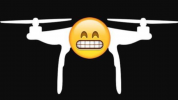Hi guys and gals. I've searched, and couldn't find my specific question or answer. So, I'm hoping you'll help me.
I'm not a part 107 holder, and strictly a recreational flier and want to stay within the rules. When I set my maximin altitude on my controller, I set it to 350', just to be what I thought was safe. I've got 40 acres of property at my home, and I'm just wondering. If I want to fly the perimeter of my property from a the max altitude that I've set (350') my drone to, is that altitude referencing from where the drone has taken off? Meaning if I take off from a hill on my property, and then fly up to 350', when the drone gets to a valley on my property, if that valley were more than 50', would I now be in violation of the recreational fliers rules? I don't have a 50' variation in elevation on my property, but I just want to be safe, and know for future reference.
Thank you all for your replies!
I'm not a part 107 holder, and strictly a recreational flier and want to stay within the rules. When I set my maximin altitude on my controller, I set it to 350', just to be what I thought was safe. I've got 40 acres of property at my home, and I'm just wondering. If I want to fly the perimeter of my property from a the max altitude that I've set (350') my drone to, is that altitude referencing from where the drone has taken off? Meaning if I take off from a hill on my property, and then fly up to 350', when the drone gets to a valley on my property, if that valley were more than 50', would I now be in violation of the recreational fliers rules? I don't have a 50' variation in elevation on my property, but I just want to be safe, and know for future reference.
Thank you all for your replies!














